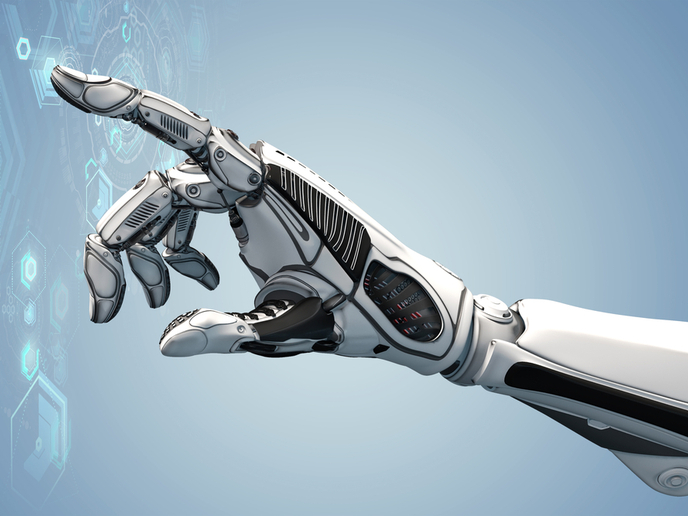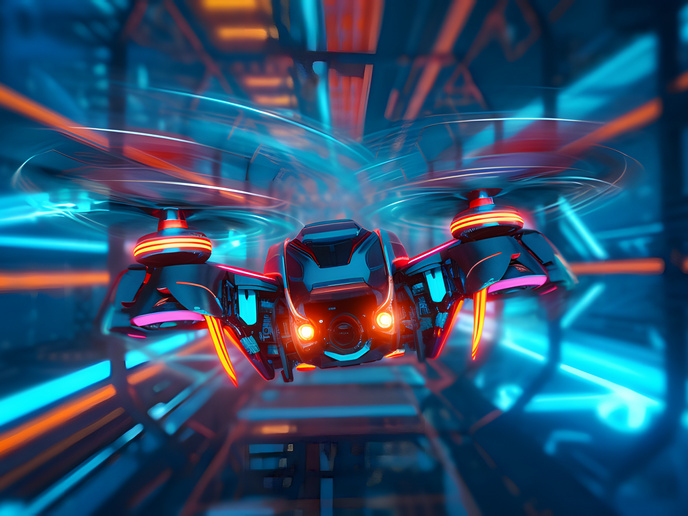Novel technologies enable human-robot interactions in warehouses
Walk around a typical warehouse where products for e-commerce platforms are stored, and you’ll see two types of ‘workers’: robots and humans. Each have their own set of tasks and most often work in strictly distinct environments. If a human accidentally enters a robot’s operating area, an entire section or even the whole warehouse will stop working, for safety reasons. This is of course far from convenient, and it can result in delays and higher operating costs. In this context, various research teams have been working on new solutions allowing human-robot interactions. The SafeLog (Safe human-robot interaction in logistic applications for highly flexible warehouses) consortium, led by the Karlsruhe Institute of Technology (KIT), is one of them. “Our objective is to enable humans to safely enter the area where the robots are working without the need to stop the whole warehouse,” says Björn Hein, coordinator of the project. “We first developed a safety concept and a new technology to detect whether a robot comes close to a human. As soon as it does, the individual robot will slow down or even stop. The advantage here is that such a system is much cheaper than the very expensive strategy of equipping all robots with safety laser scanners.” The second innovation is a concept and planning algorithm which can manage and orchestrate a heterogeneous team consisting of humans and robots sharing the same warehouse area. “Robots typically stay on their programmed paths, while humans can deviate and choose to take another route. We needed the rest of the warehouse – or at least all robots nearby – to react accordingly. With our algorithm, we can basically organise, replan and orchestrate around 1 000 robots with humans,” Hein explains. The third project outcome is meant to help human workers deal with instructions to fetch and collect certain goods in the warehouse. To guide them to the right location, SafeLog uses augmented reality (AR): The person in the warehouse wears an AR device showing the optimal path to the destination along with other relevant information. Using the same system, service technicians can even get information about the robot they are looking at, error messages, etc.
Towards a licensing model?
Whilst the SafeLog technologies have yet to be tested at a real customer site, several integration workshops and testing in a near-real environment have shown promising results. “The safety technology is positively heading towards certification. This would allow new and interactive warehouse concepts combining humans and robots,” Hein notes. “The planning and orchestration components could finally handle more humans and robots than originally planned, and it seems feasible to set up large warehouse systems. Besides, it seems our AR technology will soon be mature enough to assist human workers in everyday warehouse settings.” With the project now completed, the consortium is focusing on the commercialisation of their safety technology and concept. Several companies have already shown interest in licensing the safety concept, and Hein doesn’t exclude such a licence model for the future. Research will carry on, too: The safety technology is being tailored to ensure safe interaction of humans and mobile robots, and adaptation to the needs of other application fields is on the table. Further down the road, Hein envisions a potential SafeLog 2.0 dedicated specifically to the efficiency of human-robot interactions. “It seems like AI-based techniques and cognitive architectures focusing on understanding humans in the context of interactions with robots have a huge potential,” he concludes.
Keywords
SafeLog, warehouse, automation, robot, human-robot interaction, augmented reality, stored, e-commerce







